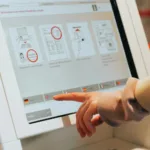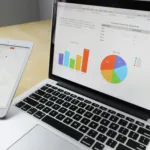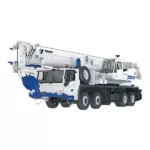If you’re looking to simplify the management of your organization, you have come to the right place. This blog has been written in hopes of helping you with your HR system, so that you can remove any form of complexities that have been bugging you. First and foremost, the main focus in developing HR systems is the same for most companies. This is because we all have the same requirements: intuitive, user-friendly, and accessible to both employees and administrators. However, if we were to plunge deeper into the root of this and be more specific, the five key features include intuitive interface design, role-based access control, mobile accessibility, self-service capabilities, and comprehensive help and support resources.
Key Features of a HR System
Intuitive Interface Design
An intuitive interface design should be implemented in HR systems. This makes navigating and understanding easier. We believe that no one would want to go through all the trouble just to streamline their workforce. It saves time and resources that could otherwise be used for other purposes, since systems are created to relieve humans of their burdens by assisting tasks that are deemed mundane or repetitive.
For instance, all HR systems in Malaysia have clear labelings, direct layout of menus and options, and consistent design elements. All these contribute to positive user experience and most importantly customer retention. With HR made easy, they are able to gauge icons, tooltips, and contextual help options to guide them through various tasks and functionalities without complications.
Role-Based Access Control
HR systems that are user-friendly offer role-based access control to ensure that users only have access to information and features relevant to their position. This is because organizations possess and own certain data that they do not want outsiders to know, especially when the employees are interns or part-timers. In order to keep this information private and confidential, administrators would set and define different levels of access permissions. Though, this depends on their personal job responsibilities and hierarchy within the organization.
For example, within an employee claim management system, a standard employee would have access to view and update their own personal information. These information could include contact details, back account information, and emergency contacts. On the other hand, managers may have access permissions to approve time-off requests, manage team schedules, and provide performance evaluations. The dichotomy of these two roles rule out their accessibility on the systems, ensuring efficient management and accountability when managing employee claims and other related processes.
Mobile Accessibility
The usage of mobile phones have become more prominent over the years. In this era, there is no doubt that pretty much everyone owns a mobile phone. Modern HR systems would need to prioritize mobile accessibility, allowing employees and administrators to access HR functionalities. It should allow access from anywhere, at any time, using their respective smartphones or tablets. Now that remote work has become more widespread, employees can utilize the system with just a touch on their screen as long as they are within the vicinity of a strong Wi-Fi signal.
Moreover, mobile-responsive design ensures that the HR system can adapt to different screen sizes and devices. One of the challenges that employees could potentially face is the unresponsiveness of the application on their devices. While this could be subjected to many factors, we believe that HR systems should integrate seamlessly into all types of screen sizes. However, employees could also opt for browser-based interfaces to perform tasks like submitting time-off requests or review performance evaluation.
Self-Service Capabilities
A user-friendly HR system allows employees to handle HR tasks on their own through self-service capabilities of the system. As an employee, you should be able to update contact details, check pay stubs, request time-off, and sign up for benefits without intervention or assistance from the HR department. This can prevent any awkwardness and the need to explain yourselves. These self-service portals can make complicated things so much more simpler and convenient for you.
From another perspective, it is also lightening the workload of the HR team so that they can focus on other subject matters that need their immediate attention. If you look at it this way, it is a win-win situation for both parties as it promotes efficiency and allows you to manage your HR affairs without a hitch.
Help and Support Resources
Have you ever found yourself stuck with troubleshooting issues? Well, fret no more! Most user-friendly HR systems should provide help and support resources to assist you. Whether it is to access training materials or learning how to use the features of the system. HR systems should help in documentation, live chat support, knowledge bases, video tutorials as these are known as common support resources offered by most HR system providers. It is also necessary to have FAQs and user forums regularly updated. This allows users to feel a sense of community and seek assistance from other individuals.
It is quintessential that HR solutions be integrated with existing software and processes. This ensures minimal labor, seamless operations, and organizational efficiency. Due to this connectivity, HR professionals can concentrate more on their projects rather than administrative tasks.
Importance of HR System Integration with Other Softwares
Streamlined Data Management
At the basis of effective HR operations lie streamlined data management and integration. It is known that these are essential for businesses to improve their processes and reduce human labor. To put it in simple terms, a streamlined data management allows data to flow easily between HR systems and other software programmes used by the company.
For instance, the integration of payroll software with HR systems sends employee data including incentives, work hours, and deductions to the payroll platform, integrating with the attendance management system. We can see that this payroll processing improves accuracy, prevents the duplication of data entry and minimizes errors. Also, payment would be received on schedule, creating a better and purposeful work environment by improving overall employee experience.
Improved Employee Experience
To improve employee experience, the company should create a coherent and non-toxic work environment. They can do this by integrating HR systems with the tool workers they use on a daily basis. For example, when HR systems are integrated with messaging applications, workers will be more informed about any changes within the company and deadlines on a timely basis. Some of the relevant information is new benefits or performance evaluation reminders that you can set on your phone. As a result of this integration, employees will be well-informed in matters related to HR and the company. It would also save them the trouble of navigating between multiple platforms to get HR information by providing timely updates
Enhanced Reporting and Analysis
For HR professionals to achieve business goals, they need to make well-informed choices and this is where reporting and analytics are essential. HR specialists have access to insights and analytics that go beyond conventional HR metrics through the integration of HR systems. For example, organizations can convert insights into performance measures, personnel trends, and areas for developing by combining data from HR and other systems like finances, operations, and sales.
As a HR expert, you’ll be able to analyze data on sales success and staff turnover rates, finding links between corporate achievements and employee satisfaction. You may also identify patterns, trends, and behaviors associated with employee engagement and retention. Through this, HR can optimize their staff management and allow their business to make more data-driven decisions for overall success.
Efficient Recruitment and Onboarding
For organizations that are keen on wanting to preserve top talents, they need to have effective recruitment and onboarding practices. By expediting the employment process, integration with recruitment platforms is essential. For example, the integration of HR systems with recruiting platforms allows for automated synchronization of application statuses and candidate data.
The process of this starts when an applicant applies for a job via a recruiting portal. Their data would enter the HR system, update their application status and profile in real-time. This integration reduces the time-to-hire process and most importantly, minimizes error in data input and prevents duplication of information. Moreover, HR specialists can decide if they want to schedule an appointment or interview with the particular interviewee. Eventually, this would improve user experience and minimize administrative load.







